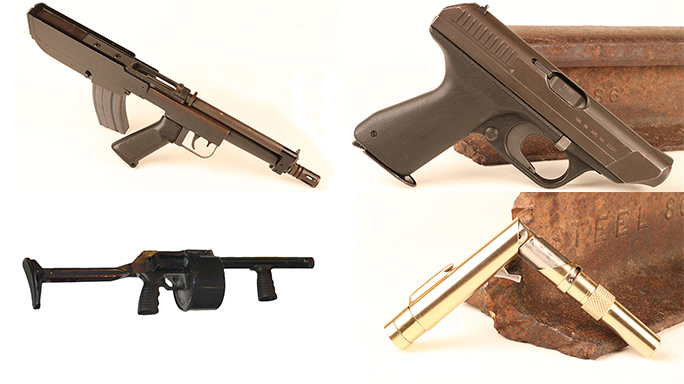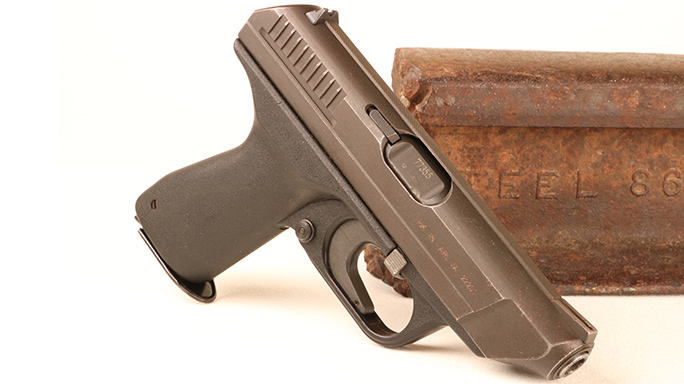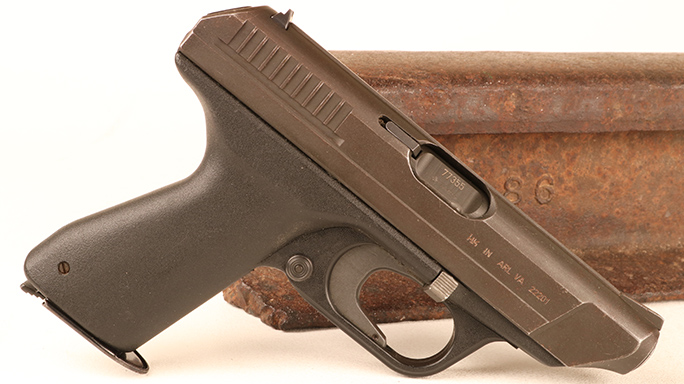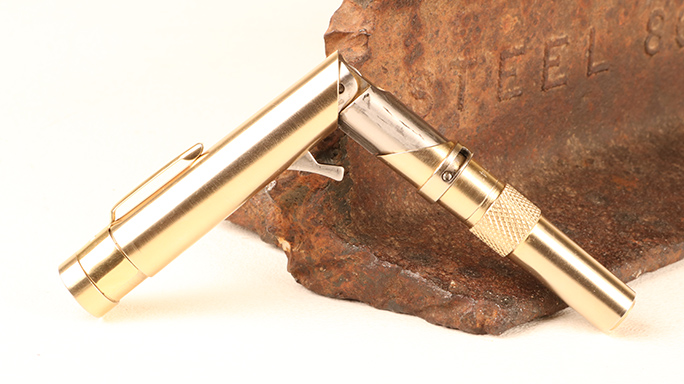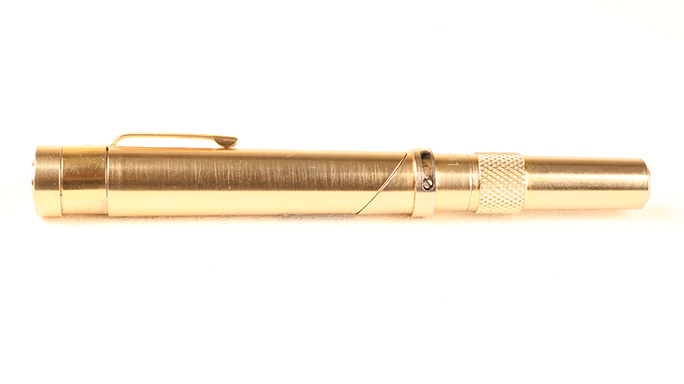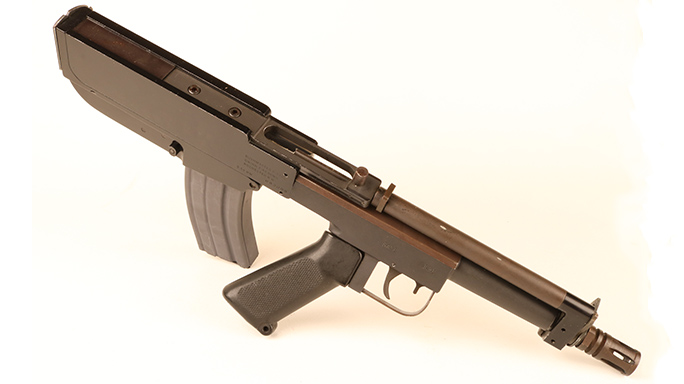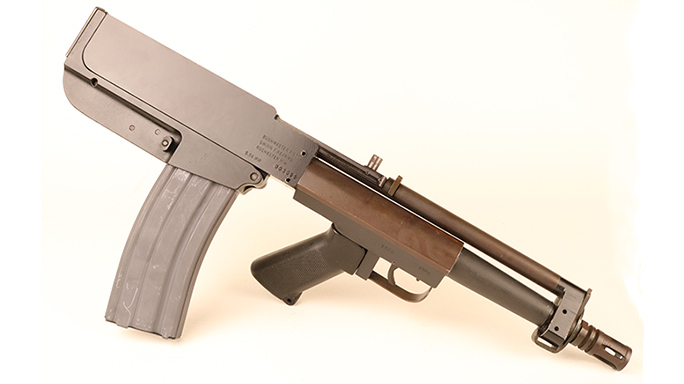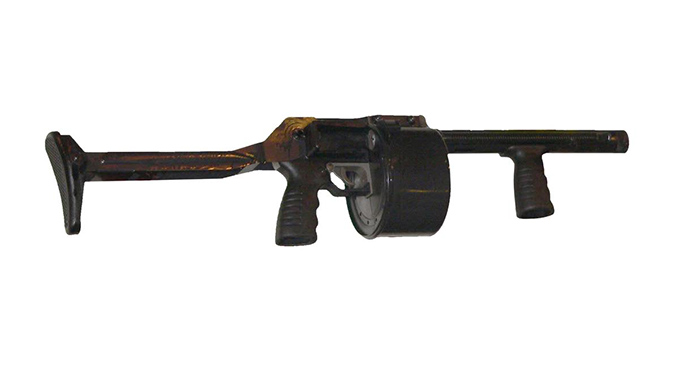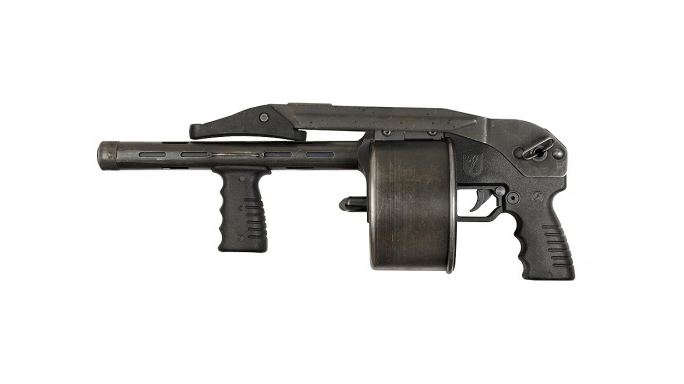Firearm design is a fascinating science. One of the most appealing aspects of guns to me, as an engineer, is the fact that they are such elegant little machines. Designers take a modest amount of kinetic energy and then harness it to do some of the most amazing things. On top of that, people’s lives depend upon how well these machines function. Whether a gun works or not can have terrible consequences for both good and ill. With such enormous stakes, as well as a robust and well-funded industry behind it, the gun world sees innovation the likes of which is seldom seen elsewhere. It also sees its fair share of “gun fails.”
RELATED STORY: Here’s a List of What We Need From the Future of the Gun Industry
John Moses Browning was a once-in-a-millennium phenomenon. The man held 128 patents and literally breathed his last breath sitting at his workbench in Liege, Belgium. Mr. Browning brought us the 1911 pistol, the Ma Deuce .50-cal, every major rifle-caliber automatic weapon used by American forces in World War II, and civilian rifles, pistols, and shotguns beyond the scope of this article to catalog. He also designed the compact 37mm autoloading cannon on the P39 Airacobra fighter just to demonstrate his versatility.
Advertisement — Continue Reading Below
Each of the epic gun fails that follow began as somebody’s dream, and that’s a shame. I’m going to viscerally shred the life’s work of these people for our mutual entertainment. However, it seems not just everybody is a John Moses Browning.
Gun Fails: Heckler & Koch VP70
Our first contestant was actually the world’s first kind-of-successful polymer pistol, and it was produced by what is arguably the premiere weapons manufacturer in the world: Heckler & Koch. It was lightweight, cool looking, and equipped with a double-column 18-round magazine. It was also a steaming pile of crap.
The HK VP70 was originally designed to be an inexpensive handgun with which to arm partisans in the event of a communist invasion of Western Europe. As a result, the gun fired via straight unlocked blowback with a minimal number of parts. The VP70 could also be attached to a futuristic-looking shoulder stock and fire three-round bursts. While the design was legitimately prescient in lots of ways, its trigger was an unforgivable sin.
Advertisement — Continue Reading Below
I would conservatively estimate the trigger pull on my VP70 at maybe 90 pounds. I cannot get through as full magazine without taking a break, and my trigger finger is nicely conditioned. While cool enough to have served as an issue handgun for the United States Colonial Marines in the epic movie “Aliens,” the VP70 will be forever tainted by its crap-tastic trigger.
Gun Fails: Braverman Stinger Pen Gun
If ever there was an innovative firearm, the Stinger Pen Gun was it. The Stinger circumvented the morphological dicta surrounding the National Firearms Act via some truly impressive engineering. The Stinger stowed in its linear form like a writing pen. However, the operator reconfigured the device into sort of a gun shape before firing. In so doing the weapon transferred uncontrolled just like any other Title 1 firearm. As is so often the case, however, the devil was in the details.
The Stinger was a single-shot contrivance offered in both .22LR and .25ACP. To load the gun you simply unscrew the barrel, load a round, and screw it back in place. To fire it, you grasp the two ends of the thing, pull them apart, and then bend the mechanism such that it settles into an L-shape. This exercise deploys the sheet steel trigger for firing.
Advertisement — Continue Reading Below
RELATED STORY: Stop the ‘Polymer Pistols Suck’ Argument, Because You’re Wrong
Once fired you straighten the gun, bend it back into its gun shape, and then do the same thing again. Failure to cycle the action twice will damage the mechanism. I am a mechanical engineer and it took me half-an-hour in my living room with the instructions in my lap to figure it out. There is no way to do it quickly or gracefully.
There are also no sights, so you just point the gun in the general direction of something you dislike and squeeze. Though the mechanism sports several very clever mechanical safety devices, the Braverman Stinger was just a bit too cool for school. An intoxicated aspiring rap artist shot himself in the head with one at a party, and his grieving mom took out her frustrations on the Braverman company via a lawsuit. The company subsequently went out of business, and the Stinger was no more.
Advertisement — Continue Reading Below
Gun Fails: Bushmaster Arm Gun
This gun was so close to awesome it hurts. Designed to equip bomber crews operating over hostile territory, the Arm Gun was supposed to replace the aviator’s standard handgun. The intent was to build a weapon that was tiny and easy to stow yet effective out to 100 meters in competent hands.
The original used a proprietary .221 Fireball (5.56x36mm) cartridge and was called the IMP-221 in Air Force parlance. IMP stood for Individual Multipurpose Pistol. When the Air Force lost enthusiasm for the gun, it was re-chambered in .223 and brought to the American civilian market.
The Arm Gun still holds the title of tiniest autoloading .223 gun ever. Its bullpup design was cutting edge and its action visionary. The gun incorporated the long stroke piston of a Kalashnikov along with the rotating bolt design of the M16. While this is fairly common today, it was groundbreaking back in the heady days of the Arm Gun.
Advertisement — Continue Reading Below
Alas, the Arm Gun carried great but shot like garbage. There was really no way to run the thing from the shoulder, and there were no sights worthy of mention. While the Arm Gun ultimately went the way of the dodo, the Bushmaster company went on to become one of America’s premiere AR rifle suppliers.
Gun Fails: The Streetsweeper
Hilton Walker birthed the Armsel Striker rotary shotgun in Zimbabwe. Walker took his design to South Africa and made a bit of a splash with it back in the day. The Striker tried to combine the reliability and versatility of the double-action revolver with the power of a 12-gauge shotgun. The end result looked cool enough to land it in several epic science fiction movies, but left us out in the real world a bit tepid.
U.S. gunmaker Cobray of MAC submachine gun fame obtained the rights to the design and produced it in the U.S. from 1989 until 1993. Along the way they committed the greatest marketing gaffe since New Coke. They named the gun the Streetsweeper and then tried to sell it to the public with Democrats ensconced in the White House.
Advertisement — Continue Reading Below
RELATED STORY: Are Bullpup Weapons Officially a Thing of the Past?
The Streetsweeper was never terribly affective. Your grandfather’s turkey gun was more dangerous in the hands of your typical thug. However, Cobray marketed the gun as the ideal tool with which to foment domestic mayhem, and the snowflakes of the day had a conniption.
The Streetsweeper was ultimately reclassified as a Title 2 firearm requiring NFA registration and a $200 transfer tax, and the gun died in short order. That any run-of-the-mill Saiga 12 is hugely more effective stands as one of the great gun-related ironies of our generation. Streetsweepers command a bit of collector juice now when they can be found for sale, but you’d be better off spending your money on a Mossberg pump.
Advertisement — Continue Reading Below
